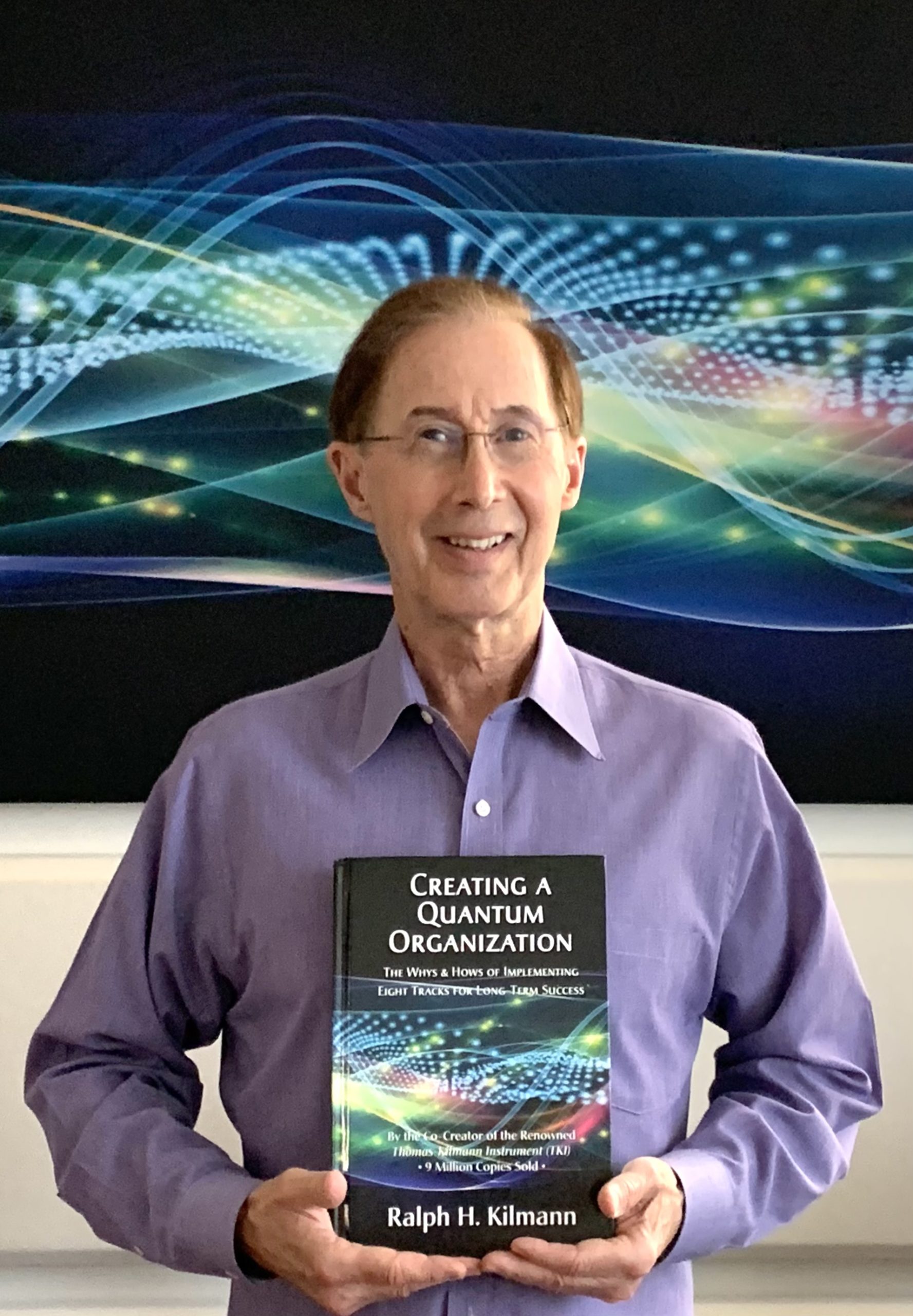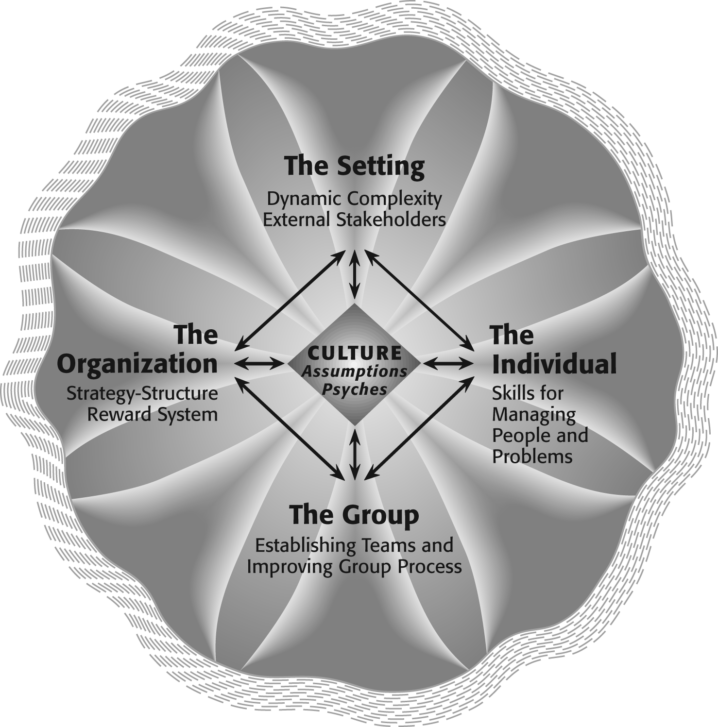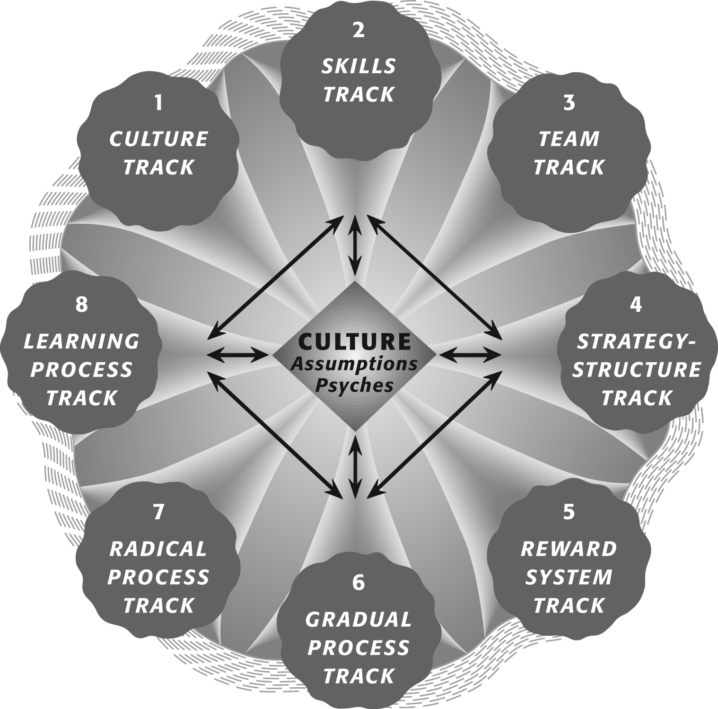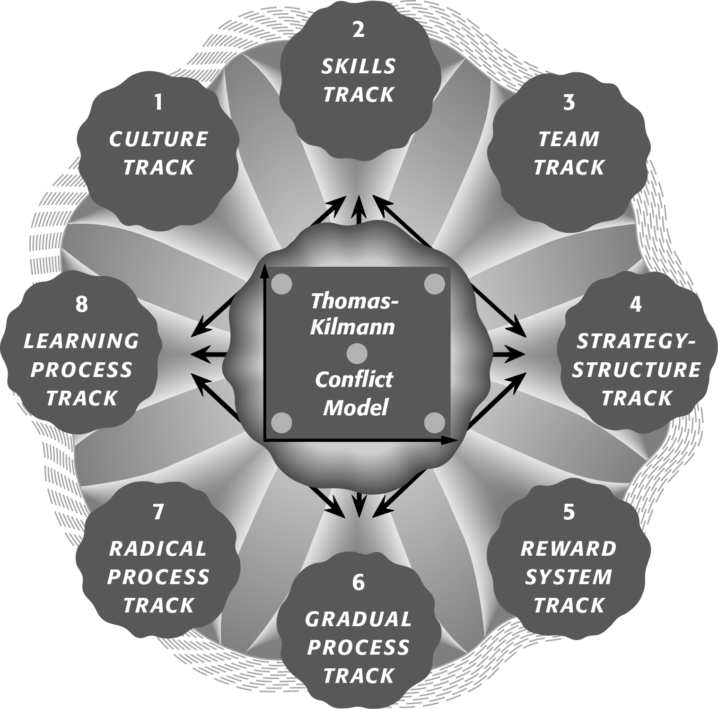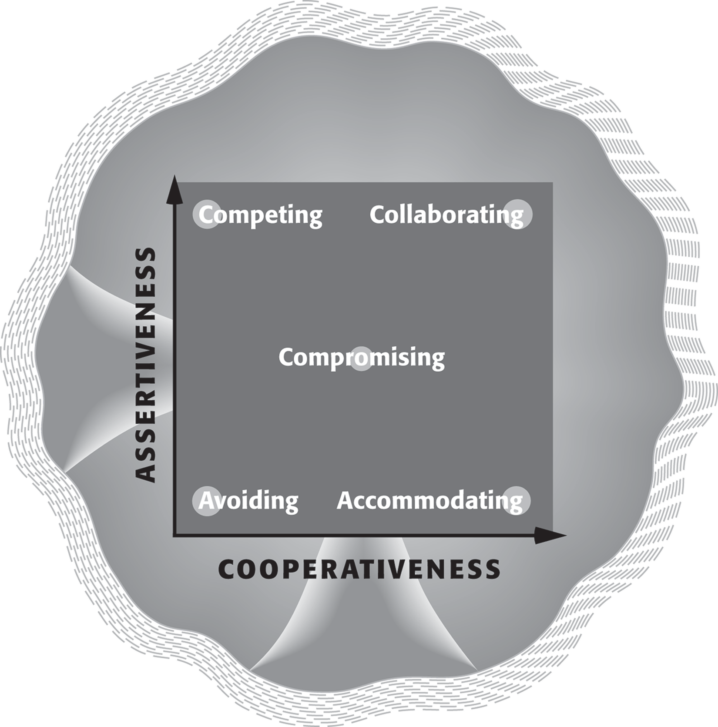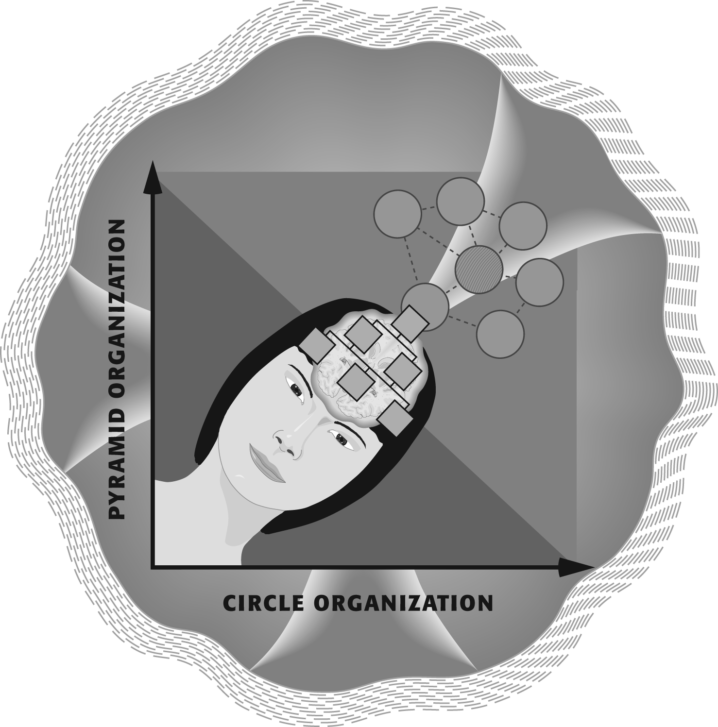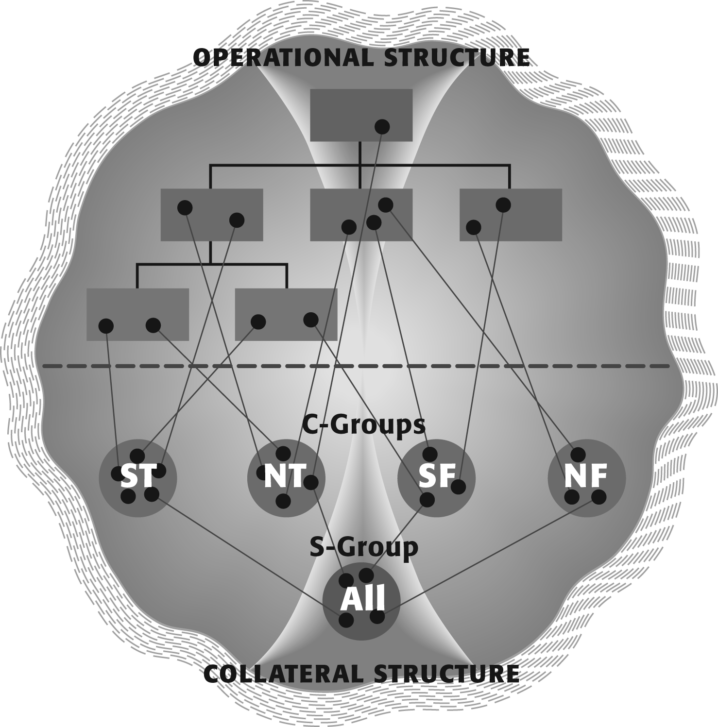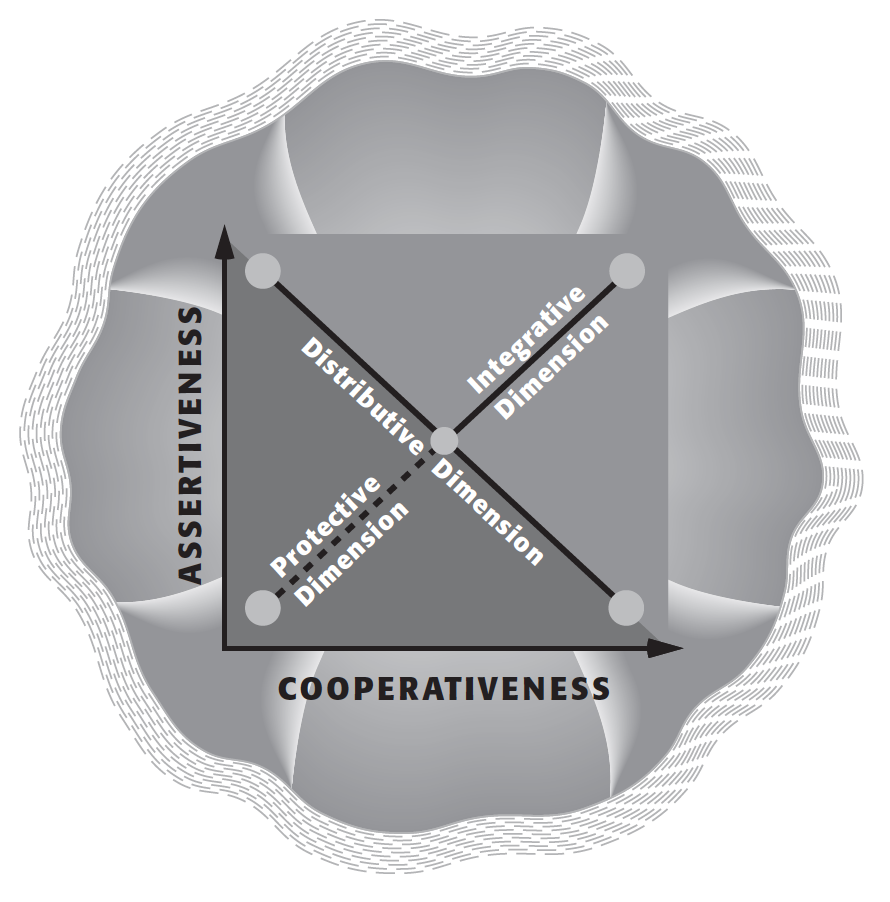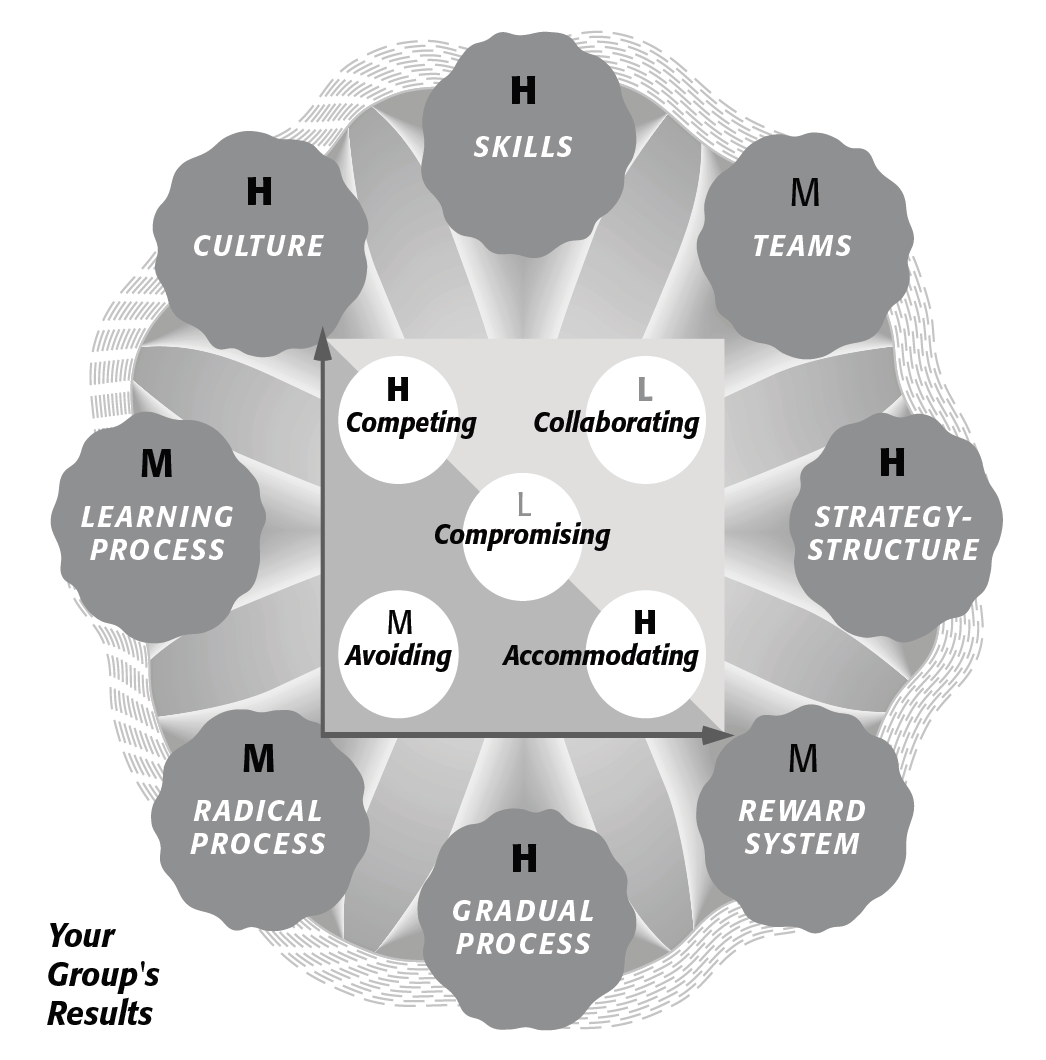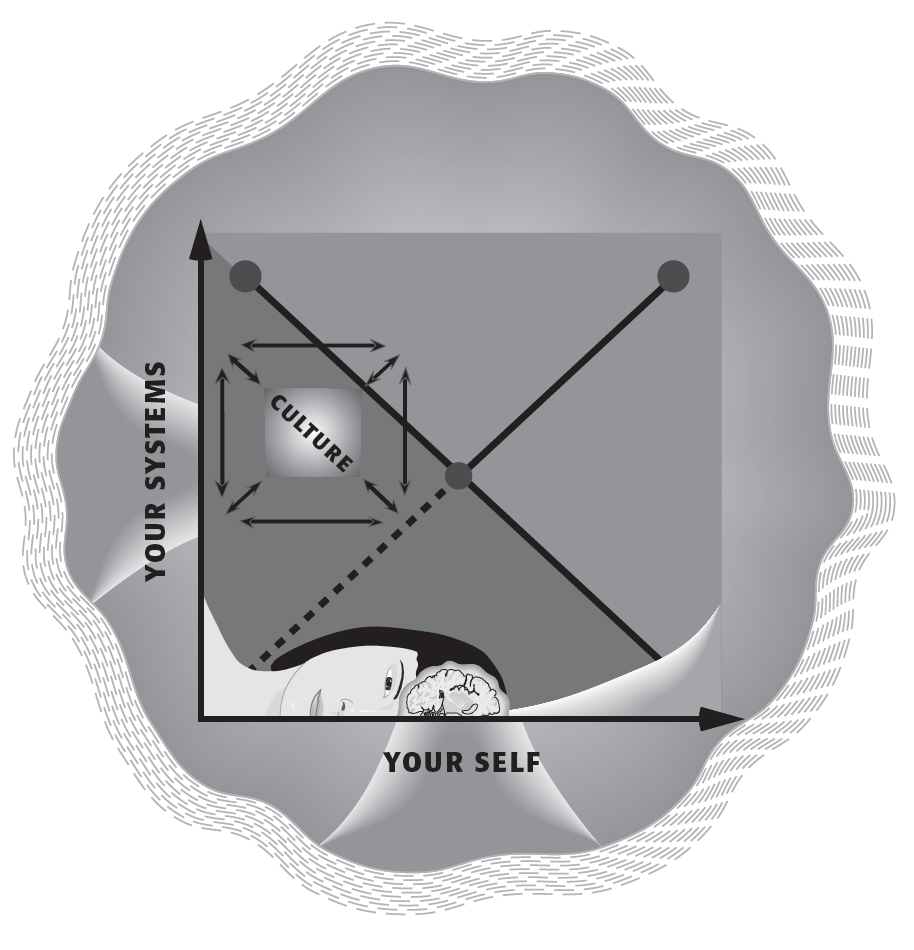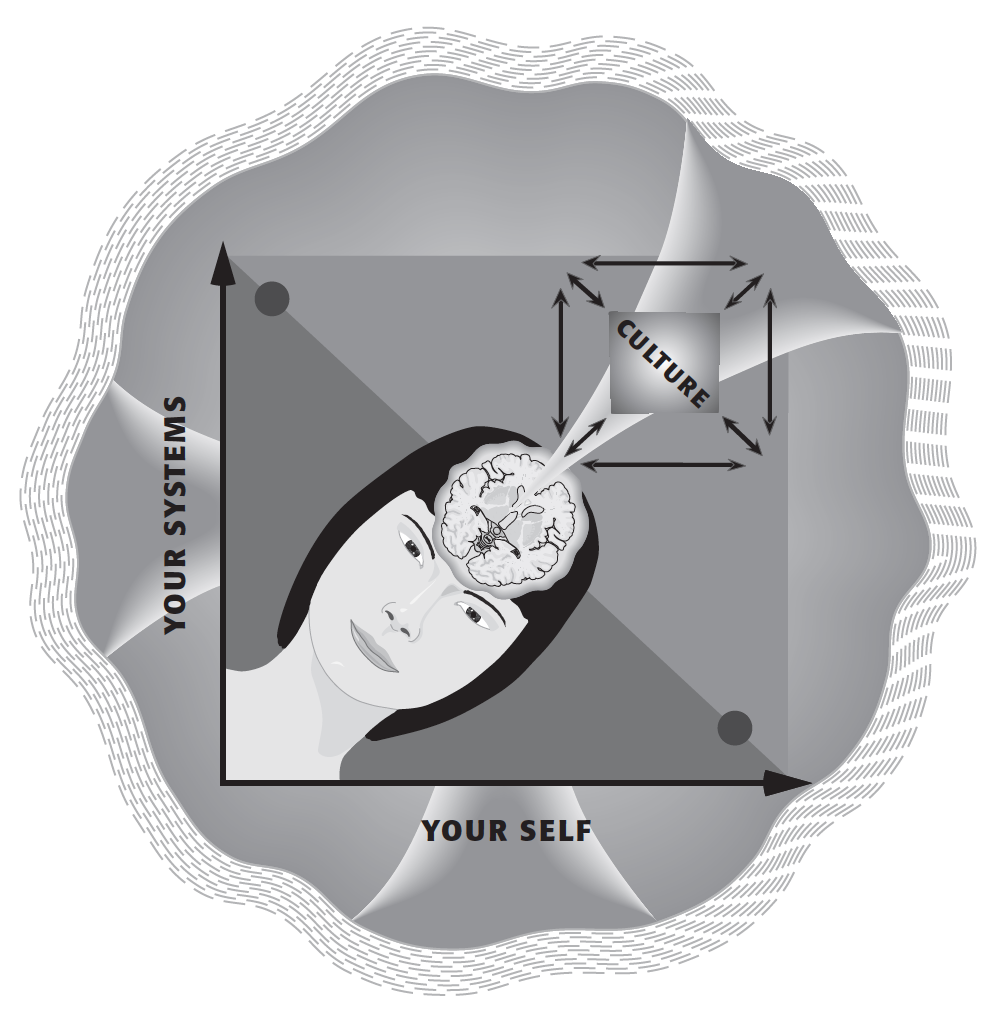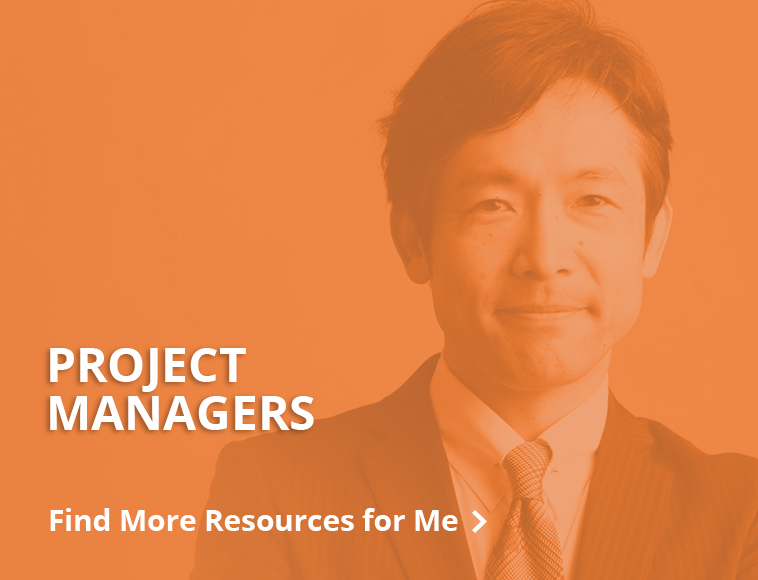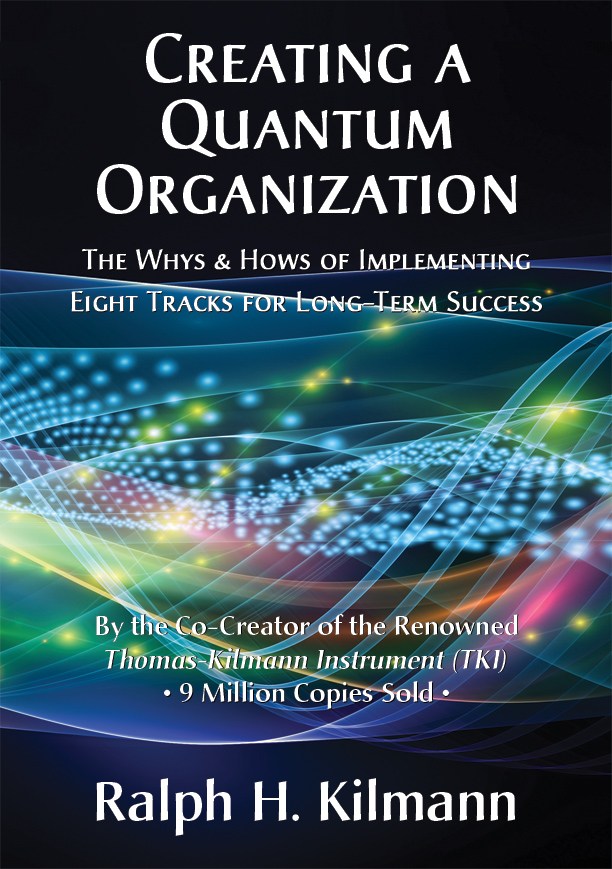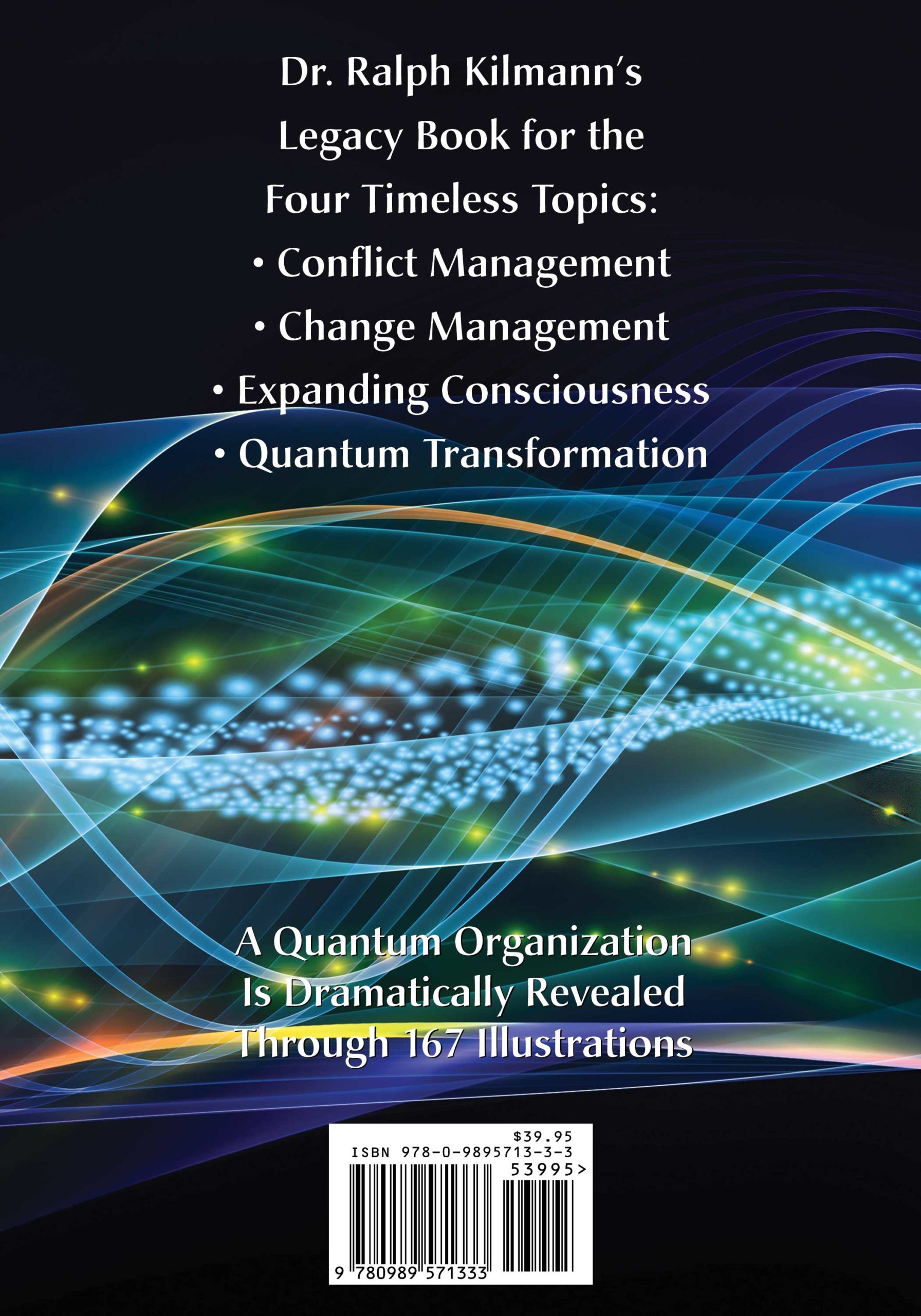Interview Dr. Kilmann
About His Legacy Book
If you’re a media person who would like to interview the author about his Legacy Book, then click on the button below, SEE PRESS KIT, for more information.
RALPH KILMANN’S LEGACY BOOK THAT INTEGRATES ALL HIS THEORIES AND METODS FOR BETTER MANAGING CONFLICT, CHANGE, CONSCIOUSNESS & TRANSFORMATION
If you scroll down this page (or click on the button directly below), you can purchase this 614-page book (including 167 elegant illustrations) at Amazon.com in the United States and also at Amazon.com in other countries around the globe (e.g., Canada, United Kingdom, India, Japan, and Australia):
Kindle electronic version = $9.95 USD to buy or…
$0.00 to read with “Kindle Unlimited”
Hardcover paper version = $49.95 USD
If you would like to purchase 10 or more copies of the hardcover version of Dr. Kilmann’s Legacy Book, you can order that larger quantity directly from Kilmann Diagnostics at a 10% discount (at $44.95 USD for each book, instead of $49.95 USD). But we only ship to the continental United States: You select the shipping method and we charge you for the shipping expense. Contact Us if you wish to learn more about our discounted option for purchasing and receiving Contact Us if you wish to learn more about our discounted option for purchasing and receiving the Legacy Book in bulk.
In the next section, you’ll discover why, in 2021, Dr. Kilmann felt compelled to update all his theories and methods for creating and maintaining long-term organizational success. In the process of significantly updating his work, the millions of TKI fans around the world will be delighted to see how he now applies his Thomas-Kilmann Conflict Model and the Kilmann Organizational Conflict Instrument (KOCI) to resolve an organization’s systems conflicts and not just its interpersonal conflicts.
FROM THE PREFACE OF THE BOOK:
CREATING A QUANTUM
ORGANIZATION
My most far-reaching and most comprehensive book in the past was initially published in 2001: Quantum Organizations: A New Paradigm for Achieving Organizational Success and Personal Meaning. That 2001 book integrated all my previous 20 books and 100-plus articles on change management and corporate transformation. In fact, my journey into this professional field began more than 50 years ago, way back in 1968, when I was first exposed to organizational theory and organizational development while I was a graduate student at Carnegie Mellon University in Pittsburgh, Pennsylvania.
I now see that my 2001 book, Quantum Organizations, turned out to be much more intellectually challenging to read (and to thus comprehend) than I had planned, since that book integrated the streams of knowledge for organizational development from such diverse fields as quantum physics, relativity theory, philosophy, evolutionary theory, cosmology, psychology, sociology, neuroscience, and consciousness research.
During the next twenty years since Quantum Organizations was published, I’ve had the opportunity (1) to present my integrative theories and change methodologies to many senior management groups, (2) to coach scores of consultants on how to implement the sequence of eight tracks in their client organizations, and (3) to create a series of recorded online courses that were purposely designed to present my material on quantum organizations to a much larger audience in the most convenient format possible. As such, during the past decades since I wrote Quantum Organizations, I have acquired a much better understanding of my own work and thus I am now better able to explain it to others in a more “down to earth” and pragmatic manner.
To make a long story much shorter, my 2021 book, Creating a Quantum Organization, is my official answer to the literally hundreds of requests I’ve received that asked me to simplify — as well as update — all my knowledge and experience in bringing a quantum organization to life. If you know me and/or my work, you also know that in no way would I ever provide a simplistic discussion about a very complex problem, as in “the guaranteed formula for success or satisfaction,” which could result in a major disservice to the challenging nature of quantum transformation.
But there’s a large gray area that exists between the one extreme of oversimplifying (“dumbing down”) a highly complex subject into some doomed quick fix — and the other extreme of offering abstract theories and concepts that are much too vague to grasp and thus much too obtuse for immediate action.
As a result, for this new book, I have deliberately chosen the “middle path” that attempts to appropriately respect the complex nature of transformational change, but does so in a manner that allows many more people to deeply appreciate — and effectively use — my theories and methods without having to know all the scientific research and knowledge across many disciplines. Yes, in this book, I still refer to a few concepts from quantum physics and other scientific fields, but I only provide the bare essentials to make an important point. That’s it.
Essentially, my new 2021 book, Creating a Quantum Organization, presents everything that I have created — and integrated — on the four timeless subjects that will always shape humanity’s struggle with its destiny: conflict management, change management, consciousness, and transformation.
This book is organized into 12 chapters that include many illustrations to take full advantage of the old adage: “a picture is worth a thousand words.” Although my previous book, Quantum Organizations, presented its 104 illustrations in full color, this 2021 book includes many more elegant figures (167 in total), but they are shown in shades of gray. I chose this Black & White scheme in order to keep the price of this book as low as possible — again, with the deliberate intention of reaching many more people and their organizations.
In this Preface and in every chapter that follows, you’ll see that I use bold-italic text to highlight key words, phrases, and sentences. Why? Decades ago, various students would borrow one or more of my books. Upon returning them to me, they’d often comment that it was exceedingly valuable in their learning process to see the particular sentences that I had previously highlighted with a permanent yellow marker. Given those prior conversations with my MBA and Ph.D. students, for this “legacy book,” I decided to provide you with that same learning experience by revealing to you — this time, using bold-italic text — precisely what I regard as the most vital points, principles, and practices during the process of creating a quantum organization.
Click to see the Table of Contents
Creating a
Quantum Organization
List of Illustrations
Preface to the Book
Chapter 1: Seeing the Big Picture — Systems, Processes, People
Three World Views for Improving Organizations
The Complex Hologram: Seeing the Big Picture
The 80/20 Rule of Systems Over Individuals
The Quantum Wheel: Integrating Conflict and Change
Creating a Quantum Organization
The Newtonian Organization
The Quantum Organization
Seven Features for Defining a Quantum Organization
Quantum Transformation
Chapter 2; Basic, Group, and Advanced Training in Conflict Management — Thomas-Kilmann Instrument (TKI)
The Essence of Conflict
The TKI Conflict Model
When to Use Each Conflict-Handling Mode
When to Use Competing
When to Use Collaborating
When to Use Compromising
When to Use Avoiding
When to Use Accommodating
The Best Approach to Conflict Management
Three Additional Dimensions on the TKI Conflict Model
Concluding Thoughts
Chapter 3: Diagnosing Systems Conflicts — Kilmann Organizational Conflict Instrument (KOCI)
Modifying the Standard TKI Instructions
Using Two TKIs with Modified Instructions
Revisiting the Complex Hologram and The Quantum Wheel
When Is It Best to Use Each Assessment Tool?
The KOCI for Assessing Systems Conflicts
Part 1 of the KOCI Instrument
Part 2 of the KOCI Instrument
Interpreting an Individual’s KOCI Results
Interpreting a Group’s KOCI Results
Interpreting an Organization’s KOCI Results
Three Key Principles for Resolving Systems Conflicts
Concluding Thoughts
Chapter 4: Quantum Transformation for Organizations — Implementing Eight Tracks for Long-Term Success
The Five Steps of Problem Management
Problem Management and Conflict Management
The Five Stages of Quantum Transformation
Stage 1: Initiating the Program
Stage 2: Diagnosing the Problems
Stage 3: Scheduling the Tracks
Stage 4: Implementing the Tracks
Stage 5: Evaluating the Results
Concluding Thoughts
Chapter 5: Culture Management for Organizations — The Culture Track
The Essence of Culture
How Do Cultures Form?
How Do Cultures Persist?
Identifying and Closing Culture-Gaps
Step 1: Sensing Problems
Step 2: Defining Problems
Step 3: Deriving Solutions
Step 4: Implementing Solutions
Step 5: Evaluating Outcomes
Concluding Thoughts
Chapter 6: Critical Thinking Skills for Organizations — The Skills Track
Simple versus Complex Problems
Trees, Branches, Roots, and Forests
Two Inquiring Systems
The Three Stages of Assumptional Analysis
Stage 1: Surfacing Assumptions
Stage 2: Classifying Assumptions
Stage 3: Synthesizing Assumptions
Four Personality Styles for Problem Management
The Problem Management Organization
Concluding Thoughts
Chapter 7: Team Management Skills Training — The Team Track
Managing Troublemakers
Identifying Troublemakers
Counseling Troublemakers
Team Building Within Work Groups
Step 1: Reuniting the Work Group
Step 2: Sensing and Defining GAPS
Step 3: Deriving Solutions to Close GAPS
Step 4: Implementing Solutions to Close GAPS
Step 5: Monitoring and Evaluating Outcomes
Interteam Building Across Work Groups
Concluding Thoughts
Chapter 8: Aligning Strategy-Structure Throughout an Organization — The Strategy-Structure Track
The Essence of Strategy-Structure
Articulating an Engaging Strategic Vision
Moving from the Abstract to the Concrete
Arranging Objectives, Tasks, and People
Designing Subunit Boundaries
Three Kinds of Task Flow
Aligning the Organization for Long-Term Success
Aligning Three SST Interfaces
Establishing a Strategy-Structure PMO
What Can and Cannot Be Changed?
Proceeding with the PMO Analysis
Implementing Strategy-Structure Change
Concluding Thoughts
Chapter 9: Designing Reward Systems for Organizations — The Reward System Track
The Essence of Reward Systems
The Effect of Culture on Rewards
The Effect of Skills on Rewards
The Effect of Teams on Rewards
The Effect of Strategy-Structure on Rewards
Establishing the Reward System PMO
From Newtonian to Quantum Reward Systems
Designing Jobs for Active Participants
Accurately Measuring Behavior
Differentiation and Integration in Reward Systems
What Can and Cannot Be Changed?
Designing the Reward System
Implementing the Reward System
Improving Reward Practices
Concluding Thoughts
Chapter 10: Improving Process Management for Organizations — The Gradual, Radical, and Learning Process Tracks
The Essence of Process Management
The Gradual Process Track
Step 1: Describing Processes
Step 2: Controlling Processes
Step 3: Improving Processes
The Radical Process Track
Business Processes and Management Processes
Integrating Structure with Process Management
Designing Subunits Around Functions or Processes
The Newtonian House
The Quantum House
Organizing PMOs for the Radical Process Track
An Example of Radical Process Improvement
The Learning Process Track
The Generic Steps for the Learning Process Track
The Learning Imperative and the Half-Life Principle
Establishing a PMO for the Learning Process Track
Concluding Thoughts
Chapter 11: Expanding Consciousness in Organization — Resolving Your Four INNER Conflicts
The Explosion and Evolution of Consciousness
The Essence of Consciousness
A Particular Sequence for Expanding Consciousness
Modalities for Expanding Consciousness
Modalities for Mind Consciousness
Modalities for Body Consciousness
Modalities for Spirit Consciousness
Ordinary and Non-Ordinary States of Consciousness
Four Stage Models for Expanding Consciousness
Wilber’s Stages of Mental and Moral Development
Hawkins’ Stages of Emotional Energies
Epstein’s Stages of Healing and Becoming Whole
Chakra Energies for Human Consciousness
The Sacred Boundaries and Their Energy Fields
The Five Spatial Boundaries
The Two Temporal Boundaries
Accessing Information from Morphogenetic Fields
Interpersonal Behavior as Radiating Energy Fields
The Four Foundational — Inner — Conflicts
1. Are You a Physical OR an Energy Body?
2. Are You Governed By Your Ego OR Your Soul?
3. Is Your Self Separate OR Fused with Your Systems?
4. Have You Resolved Your Primal Relationships?
Expanding Consciousness in the Workplace
Concluding Thoughts
Chapter 12: Twenty Critical Success Factors — Creating a Quantum Organization
Concluding Thoughts
Bibliography and References
Index for Finding Things
About the Author
FOR THE MILLIONS OF
DEDICATED USERS OF THE
THOMAS-KILMANN INSTRUMENT (TKI)
For the millions of dedicated fans of the renowned Thomas-Kilmann Instrument (TKI), Creating a Quantum Organization makes explicit — and extensive — use of the TKI Conflict Model in virtually every chapter in the book. As a result, you’re bound to learn many more illuminating applications of the TKI Conflict Model than you ever thought possible. In addition, you’ll develop a deeper appreciation for when to use each of the five conflict modes and how the three diagonal dimensions on the TKI Conflict Model (i.e., the protective, distributive, and the integrative dimensions) can shed additional light on the various short-term and long-term consequences of using one or more of the five conflict modes in any given situation.
In particular, discover how organizational members can resolve their ongoing culture conflicts between their actual (usually dysfunctional) cultural norms and more desirable (healthier) cultural norms that profoundly influence how members behave in the workplace; the skills conflicts that arise whenever members attempt to manage their recurring problems while each member is habitually making vastly different assumptions about what key stakeholders want and need; various team conflicts that typically disrupt group meetings, which then significantly sidetrack the team’s problem-solving discussions and can thus lead to all kinds of problem management errors; debilitating strategy-structure conflicts that emerge when considering whether to revitalize and then implement significant strategic and/or structural change; numerous reward system conflicts regarding how to design and administer a more effective performance appraisal system; and ongoing process conflicts in choosing which particular value-added business processes — if explicitly described, statistically controlled, and continually improved — will most likely enable the organization to achieve long-term success.
Essentially, besides the traditional use of the TKI instrument for resolving interpersonal conflicts in a variety of social situations, the TKI Conflict Model can also illuminate the great variety of organizational conflicts that members regularly experience with their surrounding systems and business processes.
Lastly, when considering how to resolve the four INNER conflicts that plague all human beings (which then determines how all their OUTER conflicts are likely to be approached and resolved), we can again apply the TKI Conflict Model for helping members determine: (1) whether they are a physical body OR an energy body; (2) whether they are governed by their ego OR their soul; (3) whether their surrounding systems are separate from who they are OR if their systems and processes are an integral part of their ego and soul; and (4) whether members have resolved their primal relationships from the past OR if they continue to project their unresolved wounds on their colleagues in the present — whenever they’re attempting to resolve challenging problems and emotional conflicts. By using the TKI Conflict Model to help members resolve such nagging INNER conflicts, organizations will then be able to make full use of all their members’ wisdom, talent, energy, and passion for achieving long-term success.
WHY READ KILMANN’S NEW BOOK ON CREATING A QUANTUM ORGANIZATION?
If you or your clients are eager to learn how to transform a sluggish Newtonian organization into a vibrant quantum organization, this book will inspire you to discover the sequence of eight tracks that lead to long-term organizational success and personal meaning: culture track, skills track, team track, strategy-structure track, reward systems track, and the three process tracks for gradually and radically improving key business processes—while speeding up the process of learning itself. Because these change initiatives are so vital to understand (especially in times of increasingly complex challenges), this revolutionary LEGACY BOOK is especially relevant to these
OCCUPATIONAL IDENTITIES:
Purchase
Creating a
Quantum Organization
You can purchase Creating a Quantum Organization
(614 pages, including 167 elegant illustrations) for
$49.95 USD in the hardcover paper version or
$9.95 USD to buy the Kindle electronic version
(or $0.00 to read with Kindle Unlimited) … on
Amazon.com in countries around the globe:
Quantum Transformation:
Take this course to learn how to
create—and maintain—a true
Quantum Organization
A grand overview of the eight tracks to long-term success, so members can transform an old Newtonian organization into an empowered, highly conscious, quantum organization.



